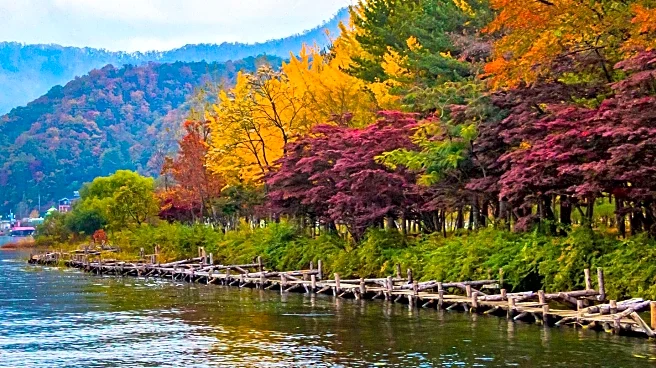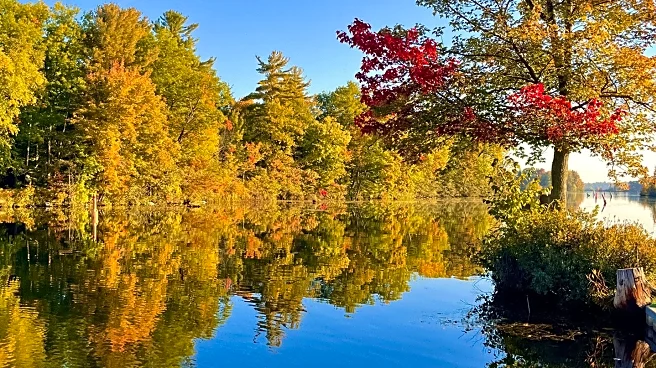What's Happening?
As October arrives, fall foliage is reaching its peak across various regions in the United States. The annual transformation occurs as trees store chlorophyll, causing leaves to change from green to vibrant shades of yellow, orange, red, brown, and sometimes purple. This natural spectacle attracts 'leaf-peepers'—nature enthusiasts eager to witness the colorful display. Interactive maps, such as those provided by Smokymountains.com, assist onlookers in identifying when and where peak foliage can be observed. The map categorizes areas into stages like near peak, peak, and past peak, offering a detailed guide for those planning to experience the fall colors. Currently, areas with minimal foliage include parts of Missouri, South Carolina, and California, among others. Meanwhile, regions like northeastern Maine and northern Vermont have already showcased their peak colors, while others, such as northeastern Washington and central Oregon, are nearing their peak.
Why It's Important?
The fall foliage season is significant for both tourism and local economies, as it draws visitors to various regions, boosting businesses such as hotels, restaurants, and local attractions. The vibrant display of colors not only enhances the aesthetic appeal of natural landscapes but also provides an opportunity for outdoor activities like hiking and photography. This seasonal event underscores the importance of preserving natural habitats and promoting eco-friendly tourism practices. Additionally, the use of technology, such as interactive maps, highlights the growing trend of digital tools in enhancing travel experiences and planning.
What's Next?
As the season progresses, more areas will reach their peak foliage, offering additional opportunities for tourism and local engagement. Stakeholders in the travel and hospitality industries may continue to capitalize on this natural event by promoting eco-tourism and sustainable practices. The ongoing changes in climate patterns could also influence future foliage seasons, prompting further research and adaptation strategies to preserve this annual phenomenon.
Beyond the Headlines
The fall foliage season also presents an opportunity to reflect on broader environmental issues, such as climate change and its impact on natural cycles. The timing and intensity of leaf color changes can serve as indicators of ecological shifts, prompting discussions on conservation efforts. Additionally, the cultural significance of fall foliage in American traditions and its role in fostering community engagement and appreciation for nature are noteworthy aspects of this seasonal event.












